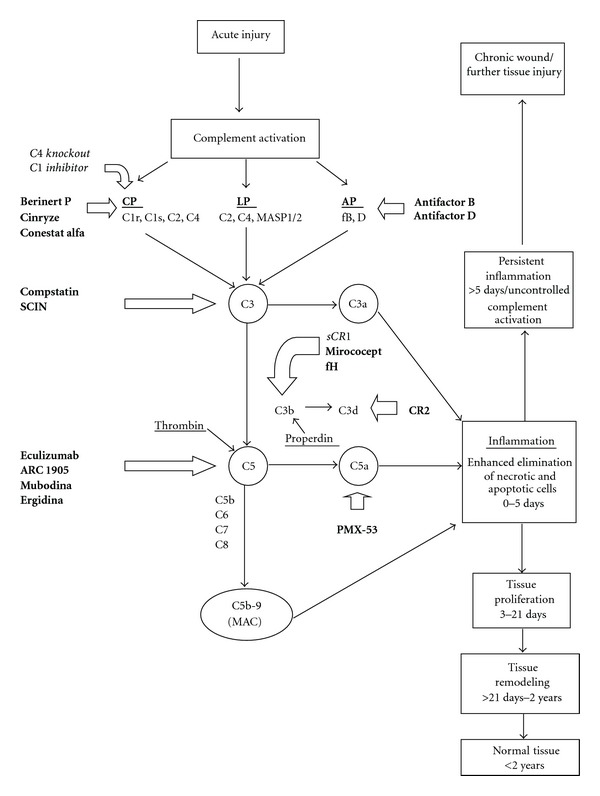Figure 1.

A simplified overview of the complement activation cascade after injury leading to wound healing. Three major pathways of complement activation, that is, the classical pathway (CP), the alternative pathway (LP), and the lectin pathway (LP), and two minor pathways initiated by properdin and thrombin are known. C is a complement component, MASP is mannan-binding serine peptidase, fB and D are factors B and D, SCIN is staphylococcal complement inhibitor, sCR1 is soluble complement receptor 1, fH is factor H, CR2 is complement receptor 2 and MAC is membrane attack complex. For simplicity, not all of the natural regulators of complement activation are shown in this diagram. The (pre)clinical complement inhibitors are denoted in bold and the complement factors that have been investigated in burn wound models in italic. C1 inhibitor affects C1r, C1s from the CP, and MASP 1 and MASP 2 from the LP. C4 knockout also affects both CP and LP.
